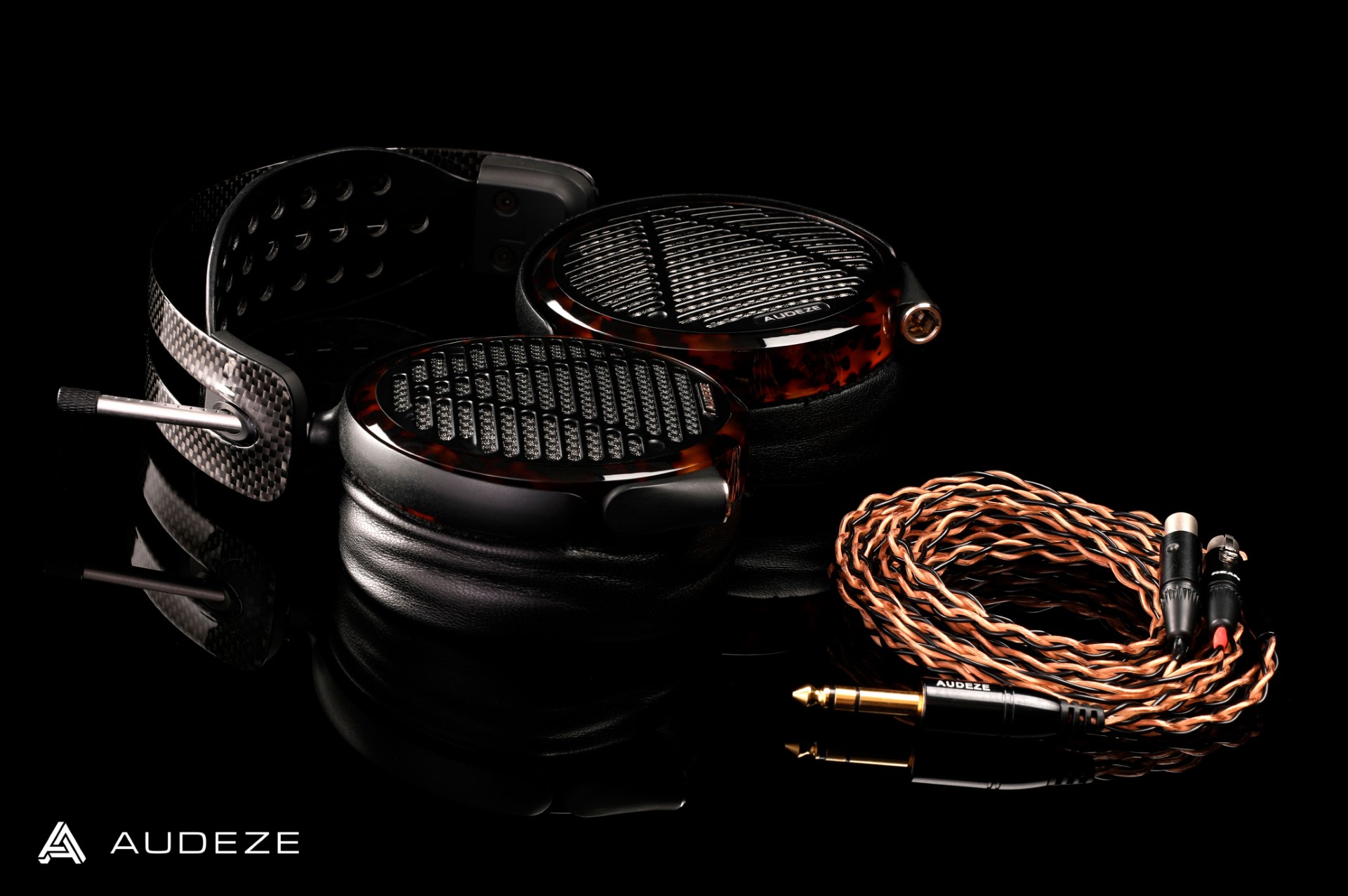The Audeze LCD-5, a new flagship planar magnetic headphone is a phenomenal piece of kit. It offers a brand new Audeze sound, way more than just a simple evolution from the LCD-4. With a natural yet almost reference style tuning they hit all the right marks. They are also lighter and significantly more comfortable than previous models.

Design: 10/10
Audeze has swapped their signature wood rings for wonderful looking tortoise shell acetate rings. As you can see below, in the right light the rings really pop and they are majestic to look at. Other slight changes, such as a different headband shape with a beautiful looking carbon fibre strab on top among as well as general weight reductions makes the LCD-5 a lot lighter (and therefore more comfortable) than their predecessors. The earcups are another diversion from previous Audeze headphones, with a concave construction (sort of bowl shaped) that tapers in from the lip. This was done to allow the LCD-5 to produce a purer, more detailed soun.d by reducing unwanted sound reflections indside the cups. Overall, all these minor tweaks (plus plenty unmentioned on the inside) have created a definitive flagship, a new sound and arguably redesigned what we used to know as that Audeze Audiophile Sound.
A definitive flagship, with a brand new Audeze Audiophile Sound
Comfort and Fit: 9/10
As mentioned above, the slight changes in the design has resulted in the LCD-5 being much more comfortable than their previous Flagships. As well as being much lighter, the new earpads are soft and spacious. The comfort strap headband is sleeker yet perfectly distributes the weight across the top of your head. There is plenty of adjustment in the headband for heads of all shapes and sizes. They clamp force is moderate, which provides a secure fit but also one that isn’t too tight or uncomfortable. Simply put, the LCD-5 is one of the most comfortable Audeze headphones to date.
Sound 10/10
Not only is the LCD-5 sporting a brand new exterior, but a new driver structure altogether. Naturally, it’s still a planar-magnetic headphone. However, it has dispensed with the LCD-4’s double-sided, 106mm fluxor magnet array in favor of a single-sided, 90mm fluxor magnet array that’s paired with Audeze’s updated Fazor waveguides and their new Parallel Uniforce voice coils to better control diaphragm movement and improve the resolution that can be achieved.
The Result?
An outstandingly neutral and natural sounding pair of headphones whose remarkable speed makes them sound light and precise.
The detail provided by the LCD-5 is simply astounding.
Bass:
Audeze are well renowned for their great bass response and with the LCD-5 they have gone for a more reference style tuning, aiming for neutrality over the warm sound of the LCD-2/3. The LCD-5 still have that slightly fuller sounding low end that Audeze users love. It is now just more controlled and there is less bloom in the bass. The low end is puchy and articulate along with having endless extension. You never miss out on anything ever in the low end. There is an effortless and realistic presentation that never disrupts the lower midrange.
Midrange:
Due to the controlled nature of the bass, there is no bleeding into the midrange allowing all vocals and instruments to come through with precision and clarity. I listened to these back to back with the LCD-4 and the LCD-5 is a lot crisper and more open in the midrange. Subtle details are easy to pick out, yet both male and female vocals sound utterly effortless and natural. Whether it’s an electric or acoustic guitar you hear what is recorded. Powerful crunching riffs or delicate finger picking, you hear it all. Every sound is easily separated from other layers in the mix but form an overall sound that is coherent and whole.
This is one of the most accurate midrange reproductions I have heard to date.
Treble:
The LCD-5 seem to favour the upper treble and don’t have an abundance of energy in the lower treble which is good for those more prone to fatigue. Luckily snares still snap with authority and everything is still very clean and clear. The treble is very airy and open, the extension is incredible with no noticeable early roll-off. One the the standout qualities in the treble is the actual placement. There is really good height to the soundstage so cymbals and the like occupy their own space with expert precision. The detail retrieval again is done with refinement and finesse, rather than throwing it at you, it allows you to hear should you wish to listen for it.
Genres and Soundstaging
The LCD-5 really do lend their hand to anything, they have the power and speed for metal, the visceral punch for electronic, the dynamics for classical and the finesse for acoustic. These will handle anything and everything you throw at them.
The soundstaging is also phenomenal. The LCD-5 are open and airy. They have excellent width and height and there is also superb layering along with pinpoint accuracy. There are so good, that sometimes you will wonder if the sound is truly coming from the headphones.
About Pairing:
The LCD-5 are a high-end headphone. It is therefore no surprise that these are not built to be used with your smartphone. These really do demand a proper desktop rig to sound their best. We have them paired with the Burson Audio Conductor 3X Reference in our demo room. This really is a superb pairing which we could not put in higher regard. The Burson amp/DAC combo’s work so well with all Audeze products. Providing tons of clean power without any sort of harshness. There is an ever so slight hint of smoothness to the Burson amps that just keeps you wanting to listen more.